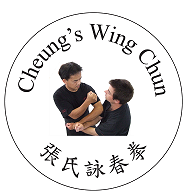In the old ways, when you study Kung Fu or martial arts (more preciesly, Chinese Martial Arts), learning Chinese lion dance is also part of the curriculum and very common in Southern style Kung Fu. The lion dance required a team of two people to perform, usually martial artists because most of the moments contains a lot of Kung Fu elements and physically demanding. Although it is very beneficial to any martial arts, but also very good to the body in general and need not required any specific Kung Fu knowledge other than obey the instruction given to you during the learning process. If you learn at a young age, Chinese Lion dance can strengthen the child’s physique and well being and its fun too!
WE BELONG TO THE SOUTHERN STYLE OF LION DANCE.
The likely origin of Chinese Lion Dance (about 2200 years ago):
Although its specific origins have been lost in the mists of time, most historians believe lion dancing began in the late Han Dynasty (206 BC-220 AD), when lions were brought to Northern China from Central Asia as gifts for the emperor and representations of the beast began to be incorporated into existing traditional dances.
New Directions
By the Tang Dynasty (618-907 AD), lion dancing had become a distinctive form of cultural entertainment and was regularly performed at the imperial court. Historical accounts describe the “Lion Dance of the Five Directions”, which featured a quintet of large and colourful lion effigies controlled by ropes.
Pride of the North
Lion dancing continued to spread across Northern China and develop the characteristics that are still associated with the Northern style of the dance today. Unlike the better-known Southern version, the Northern dance features semi-realistic, shaggy-haired lion costumes, and often involves a pair of “lions” (one male, one female).
Southern Charm
The later Southern form first originated in Guangdong. As well as incorporating martial arts elements into the routines, the Southern lion dance features oversized costumes and bright, bold colours. The Southern version has a number of key details: the mirror between the lion’s eyes is meant to scare away evil spirits and the horn in the forehead is for fighting evil; the accompanying red ribbon shows it’s been blessed and awakened to pay respect to the gods.
The Lion Roams
Beginning in Japan as early as the 8th-century, lion dancing spread throughout Asia, to Vietnam, Indonesia, Korea, Tibet and beyond. Today, there are many regional variations in China.
Cultural Evolution
The Southern version divided further into the Fut San (or Fo Shan) and Hok San (or He Shan) disciplines, with the latter being developed by “Canton Lion King” Feng Geng Zhang in the early 20th-century. Fut San is based mainly on kung fu moves, while Hok San is more playful and expressive.
